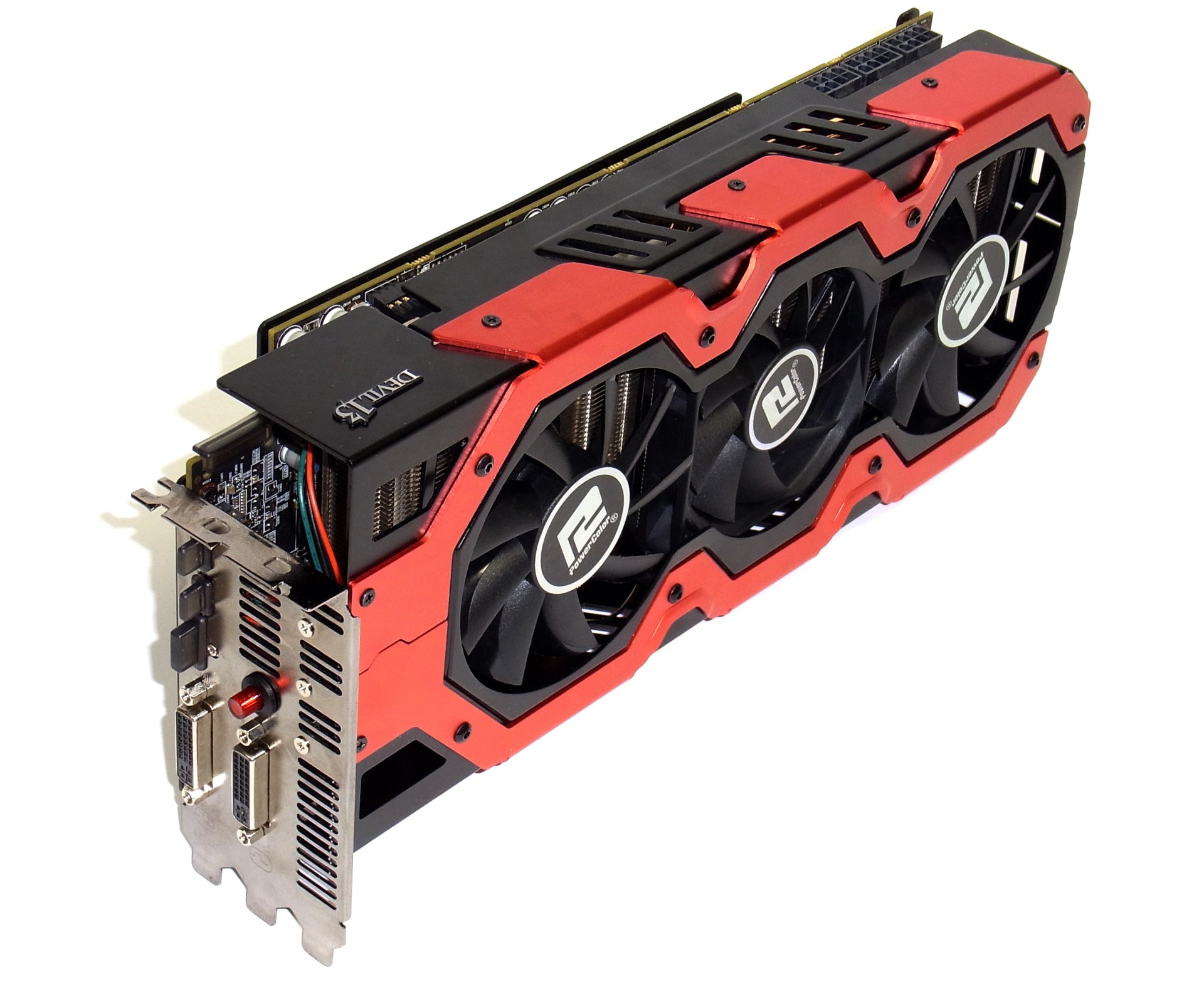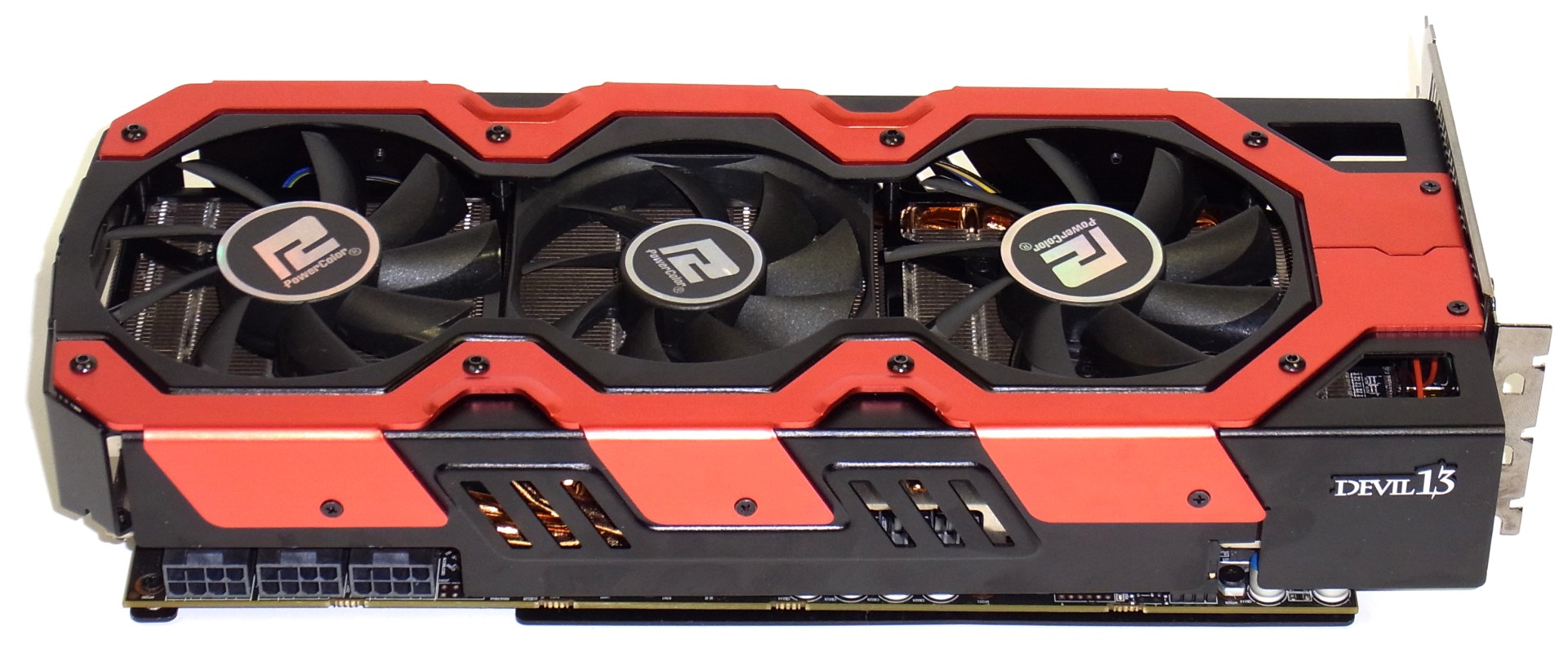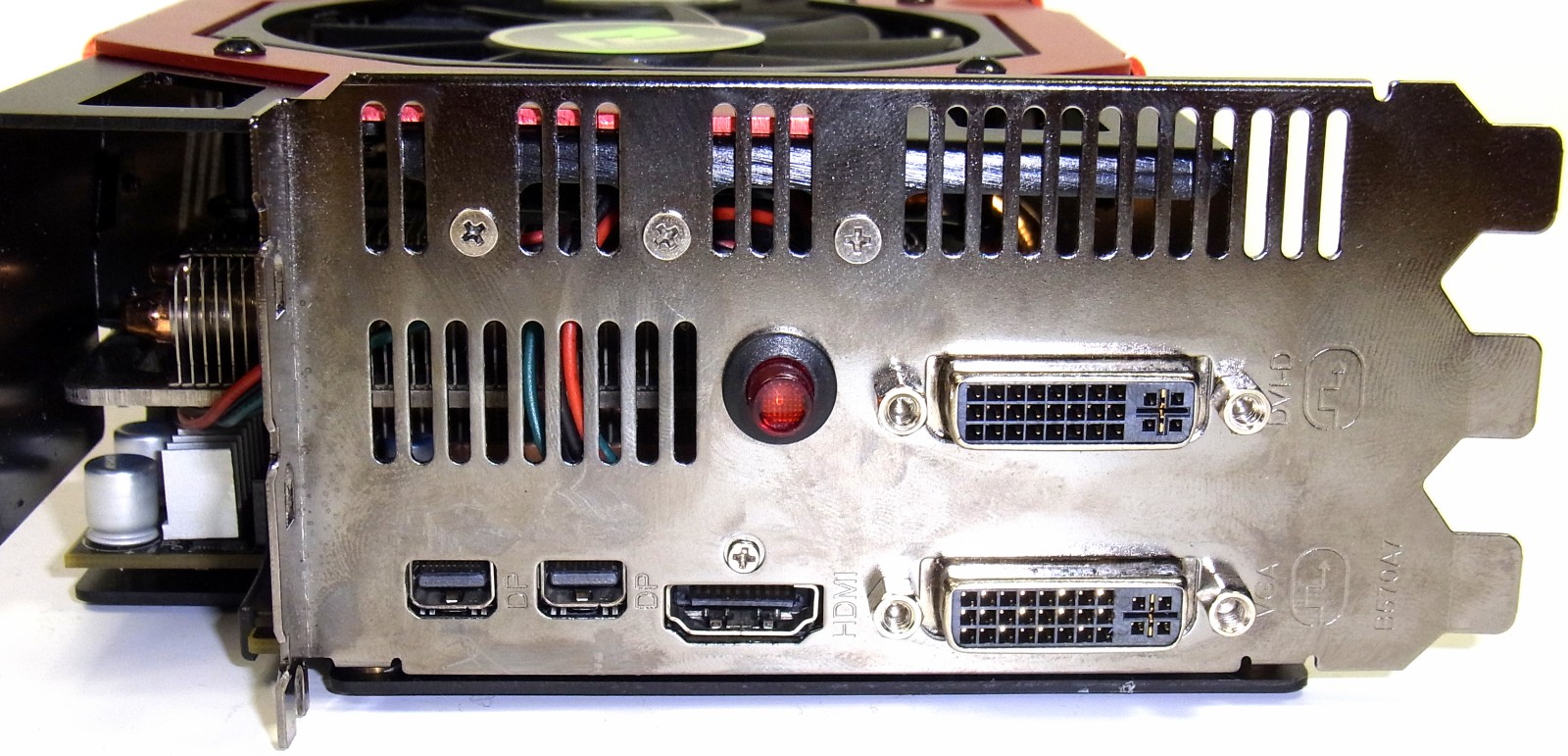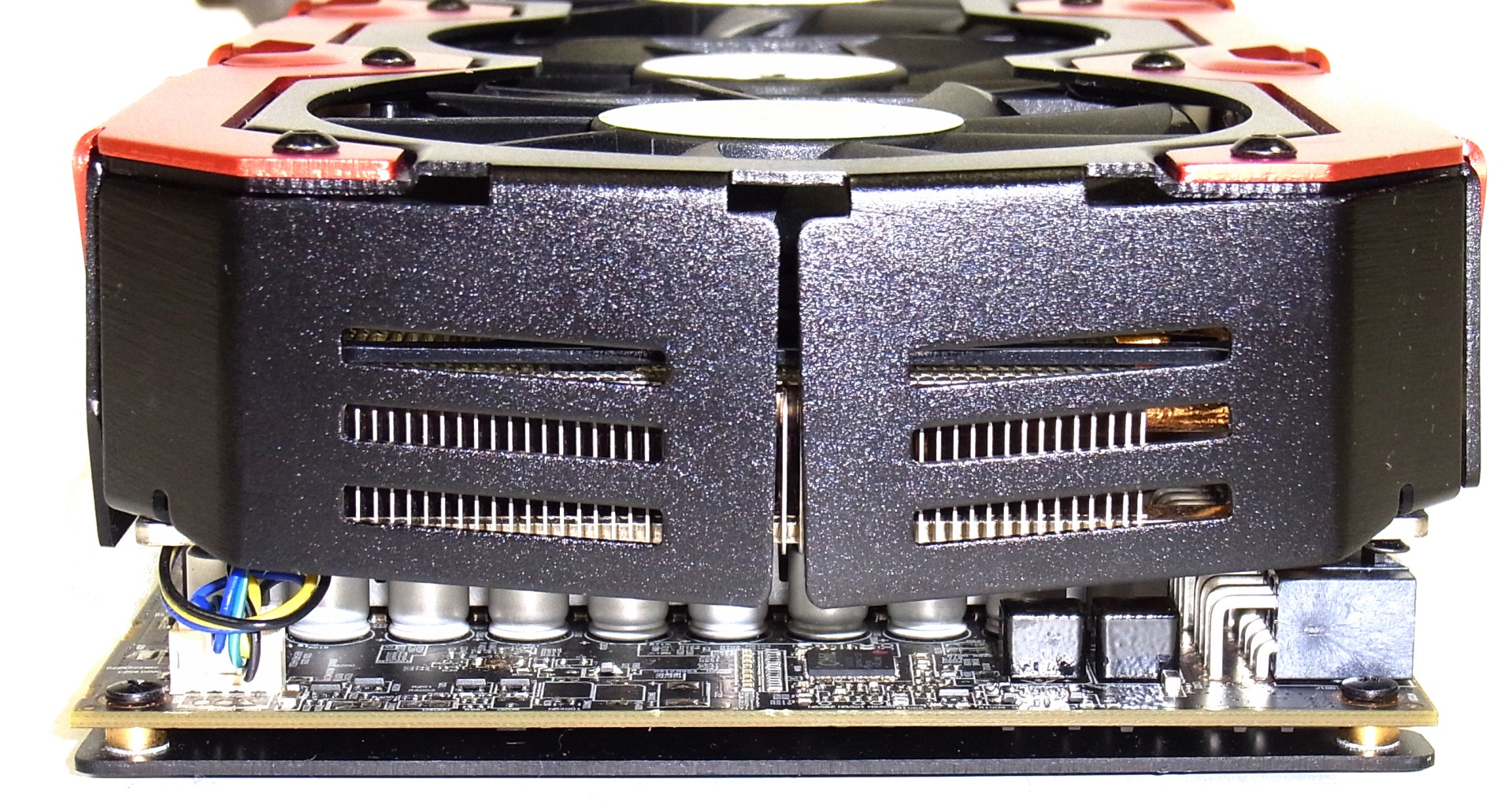Radeon HD 7990 And GeForce GTX 690: Bring Out The Big Guns
EVGA recently lent our German lab one of the GeForce GTX 690s we've had in the U.S. for months. The purpose? To pit against HIS' upcoming 7970 X2 and PowerColor's Devil13 HD7990, both dual-Tahiti boards vying to become the world's fastest graphics card.
PowerColor Devil13 HD7990: Big And Flashy
PowerColor Devil13 HD7990: A Beautiful Beast?
PowerColor was the first vendor to market a Radeon HD 7990 in the absence of an official reference design from AMD. Perhaps AMD figured out that it'd have too-difficult of a time competing against the GeForce GTX 690 given Tahiti's power requirements (and the requisite cooling required to dissipate the heat from two GPUs). Either way, the Devil13 HD7990 makes no apologies about its size, power demands, or cooling solution.
Club 3D and VTX3D are also using the same PCB as PowerColor, selling a similar design running at slightly lower clock rates. The cards are all identical, though, aside from their stickers.
PowerColor itself offers two different Radeon HD 7990 cards. The Devil13 HD 7990 boasts the highest clock rates and best bundle. But its extravagance begins with some really crazy-looking packaging.
PowerColor's accessory package is comprehensive. It even includes a brace, which is necessary to hold the 1.77 kg card securely in your case. The PowerJack brace doesn't fasten to any part of the chassis itself, but rather supports the card's weight by sitting on the bottom of the enclosure, propping the Radeon HD 7990 up. It's able to extend up to 235 mm-tall.
The bundle also includes a DVI dongle, a mini-DisplayPort-to-DisplayPort adapter, a mini-DisplayPort-to-single-link DVI adapter, three power adapters, a CrossFire ribbon cable, an instruction manual, and a screwdriver set.
Like HIS' 7970 X2, PowerColor's Devil13 HD7990 employs a custom three-slot design. It uses a trio of fans for cooling though, rather than two. As you can see in the shot below, the blowers aren't identical. The middle fan has a diameter of 75 mm and is tilted a little to direct airflow. The other two fans are 90 mm in diameter.
Get Tom's Hardware's best news and in-depth reviews, straight to your inbox.
Three eight-pin connectors and the PCI Express slot, together, should deliver up to 525 W of power. This isn't enough under load, though. Again, we'll talk more about this shortly.
There are six LEDs on the back of the card that convey the status of its power supply. But because the Devil13 HD7990 actually uses six phases per GPU, we're not quite sure what the lights are actually showing. Regardless, they do look very nice.
The rest of the board is hidden under a massive backplate.
The Devil13 HD7990's graphics memory is manufactured by Hynix and can be manually overclocked all the way to 1500 MHz or more. PowerColor's factory setting is 1375 MHz, so headroom does exist.
Similar to EVGA's GeForce GTX 690, PowerColor taps PLX's PEX 8747 PCI Express switch, allowing both Tahiti GPUs to communicate with the host using PCI Express 3.0's 8 GT/s signaling. Technically, this is an advantage that both dual-GPU boards hold over HIS' 7970 X2, which utilizes a switch from Lucidlogix limited to PCI Express 2.0 data rates.
Display output connectivity includes two mini-DisplayPort, one HDMI, and two dual-link DVI ports. That red button switches the card's firmware between normal and overclocked BIOSes. It glows red when the more enthusiast-oriented settings are active.
The exhaust ports on the back of the card are fairly small, and probably could have been larger to facilitate better airflow. Because they're as narrow as they are, a lot of hot air is driven down onto the PCB.
Current page: PowerColor Devil13 HD7990: Big And Flashy
Prev Page EVGA GeForce GTX 690: Elegance, Illustrated Next Page Benchmark System
Igor Wallossek wrote a wide variety of hardware articles for Tom's Hardware, with a strong focus on technical analysis and in-depth reviews. His contributions have spanned a broad spectrum of PC components, including GPUs, CPUs, workstations, and PC builds. His insightful articles provide readers with detailed knowledge to make informed decisions in the ever-evolving tech landscape
-
mayankleoboy1 IMHO, the GTX690 looks best. There is something really alluring about shiny white metallic shine and the fine metal mesh. Along with the fluorescent green branding.Reply
Maybe i am too much of a retro SF buff :) -
Ironslice What's the most impressive is that the GTX 690 was made by nVidia themselves and not an OEM. Very nice and balanced card.Reply -
thanks for the in depth analysis with adaptive V-sync and radeon pro helping with micro stutter.Reply
not to take away anything for the hard work performed; i would have liked have seen nvidia's latest beta driver, 310.33, included also to see if nvidia is doing anything to improve the performance of their card instead of just adding 3d vision, AO, and sli profiles. -
RazorBurn AMD's Dual GPU at 500+ Watts of electricity is out for me.. Too Much Power and Noise..Reply -
mohit9206 2 670's in sli is better than spending on a 690 and 2 7950's in Xfire is better than spending on a 7990. this way you save nearly $300 both waysReply









